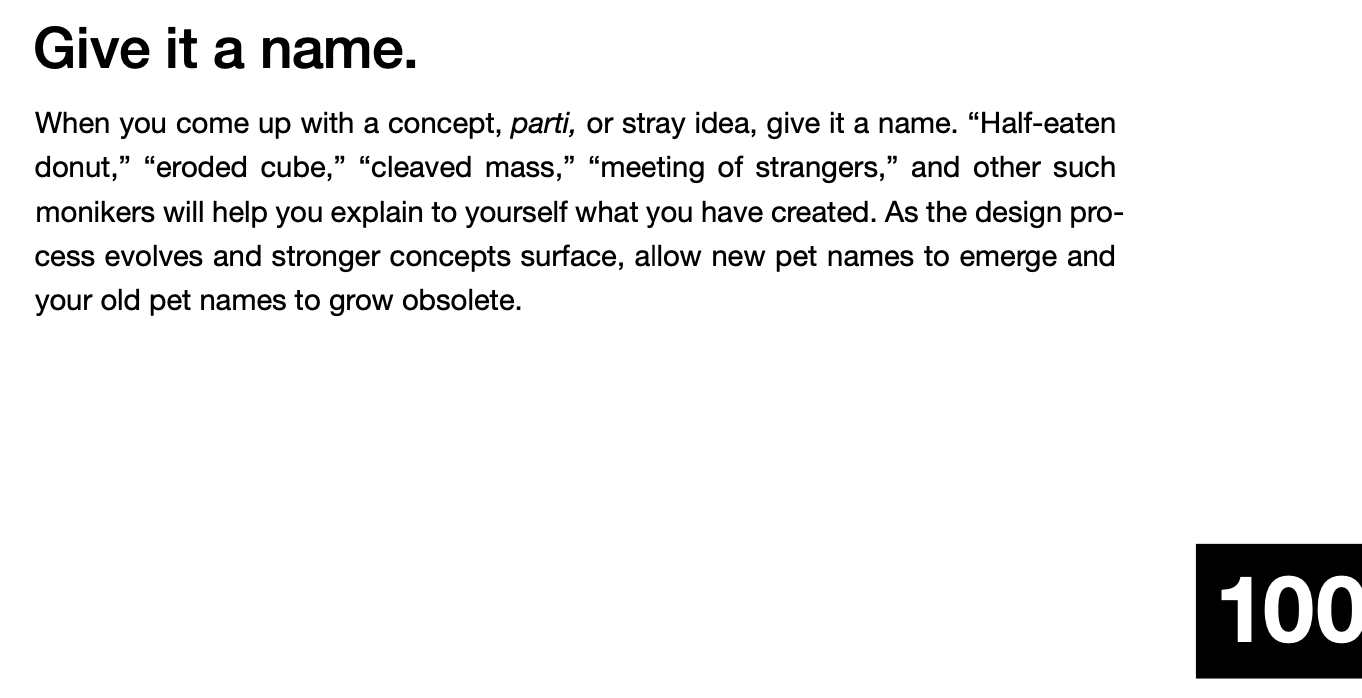Andyʼs working notes
About these notesEvergreen notes
Evergreen notes are written and organized to evolve, contribute, and accumulate over time, across projects. This is an unusual way to think about writing notes: Most people take only transient notes. That’s because these practices aren’t about writing notes; they’re about effectively developing insight: “Better note-taking” misses the point; what matters is “better thinking”. When done well, these notes can be quite valuable: Evergreen note-writing as fundamental unit of knowledge work.
It’s hard to write notes that are worth developing over time. These principles help:
- Evergreen notes should be atomic
- Evergreen notes should be concept-oriented
- Evergreen notes should be densely linked
- Prefer associative ontologies to hierarchical taxonomies
- Write notes for yourself by default, disregarding audience
This concept is of course enormously indebted to the notion of a Zettelkasten. See Similarities and differences between evergreen note-writing and Zettelkasten.
Implementing an evergreen note practice
See:
- Write about what you read to internalize texts deeply
- Taxonomy of note types
- A reading inbox to capture possibly-useful references
- A writing inbox for transient and incomplete notes
- Executable strategy for writing
References
Ahrens, S. (2017). How to Take Smart Notes: One Simple Technique to Boost Writing, Learning and Thinking – for Students, Academics and Nonfiction Book Writers.
Many students and academic writers think like the early ship owners when it comes to note-taking. They handle their ideas and findings in the way it makes immediate sense: If they read an interesting sentence, they underline it. If they have a comment to make, they write it into the margins. If they have an idea, they write it into their notebook, and if an article seems important enough, they make the effort and write an excerpt. Working like this will leave you with a lot of different notes in many different places. Writing, then, means to rely heavily on your brain to remember where and when these notes were written down.
Luhmann, N. (1992). Communicating with Slip Boxes. In A. Kieserling (Ed.), & M. Kuehn (Trans.), Universität als Milieu: Kleine Schriften (pp. 53–61). Retrieved from http://luhmann.surge.sh/communicating-with-slip-boxes
Evergreen note titles are like APIs
When Evergreen notes are factored and titled well, those titles become an abstraction for the note itself. The entire note’s ideas can then be referenced using that handle (see Concept handles, after Alexander). In fact, this property itself functions as a kind of litmus: as you develops ideas in notes over time and improve the “APIs,” you’ll be able to write individual notes which abstract over increasingly large subtrees (e.g. Enacted experiences have incredible potential as a mass medium, Evergreen note-writing as fundamental unit of knowledge work).
Some effective note “API design” techniques: separation of concerns (Evergreen notes should be atomic), sharp titles (Prefer note titles with complete phrases to sharpen claims), and positive framings (Prefer positive note titles to promote systematic theory).
Related: Grounded claims, after Qian et al
References
Frederick, M. (2007). 101 things I learned in architecture school. MIT Press.
Conversation with Michael Nielsen, 2019-12-16